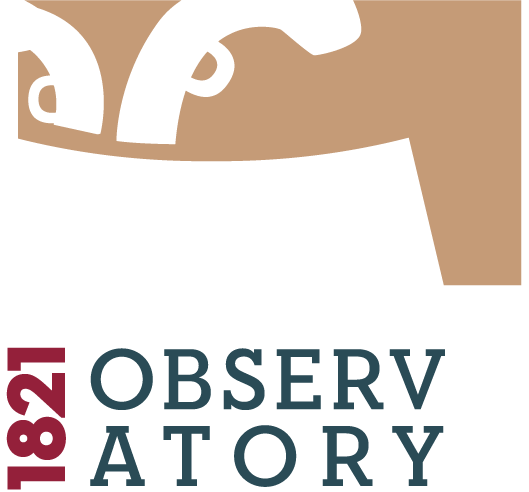Philhellenic artists’ Images of Greece through the filter of ideology and aesthetics
Item
Title
Philhellenic artists’ Images of Greece through the filter of ideology and aesthetics
List Of Authors
Creator
Spatial Coverage
Subject - keywords
Date
4 February 2021
Abstract
"The paper explores the manifestations of philhellenism in European art (paintings and prints), with input from travelogues and literary texts. The vivid interest of Europeans in modern Greece, the Romantic movement, and its branch of Orientalism, against a backdrop of foreign travel as well as antiquarianism, are diversely interwoven within philhellenic artistic production, as is confirmed by the iconography and the formalism of the works. The synergy of image and word in many prints contributes to this diversity.
The binary oppositions Christians–Muslims, Greeks–Turks, civilised–barbarian are ideal topics for the art of Romanticism, which loves contrasts with their visual potency, their semantic and expressive charge. Throwbacks to Hellenic antiquity, which adopt elements of the stylistic vocabulary of Neoclassicism, its aesthetic ideology and its rhetoric, frequently impart contents of wider ambit to the depictions beyond that of current events. The models and their handling are a parameter of nodal importance, as investigated in this paper. The artists draw, among others, from a wide, timeless horizon of models and reference points in the visual arts. Thematic and formal motifs, established religious types, allegorical figures and symbolism, as well as decorative elements, are inscribed and acquire new meanings in the new contexts and in a nexus of relations at a pragmatic-realistic and symbolic level.
The paper also examines a critical aspect of the philhellenic iconography present in the entire spectrum of topics, i.e. the costumes: the local costumes and the “national dress”, the foustanela, distinguished and ideologically charged in multiple ways. As a particularly fertile field for visual utilisation, the costumes were susceptible also to treatments that were clearly influenced by European aesthetic currents, by the taste of the times and the dictates of the market. Indeed, in some of these images we see the “career” and the “evolution” of some high-profile personalities of the struggle in philhellenic iconography. Dress, a dominant form of visual communication, was used as a tool in many ways in the frame of philhellenism, enhancing the diverse filters (identity issues, gender issues, exotic otherness, antiquarianism) through which Europeans viewed the costumes of Greece and frequently also the people who wore them. It should be noted that the costumes were used as a basic tool in contemporary interpretative approaches of philhellenic discourse, textual and pictorial, within the new widened horizon of studying relations between the West and the Ottoman Empire, in the light of a global art history in which political parameters are also implicated."
From the book of abstracts of the conference, as it was published on Intiative's 1821-2021 website.
[Original extract edited for clarity]
The binary oppositions Christians–Muslims, Greeks–Turks, civilised–barbarian are ideal topics for the art of Romanticism, which loves contrasts with their visual potency, their semantic and expressive charge. Throwbacks to Hellenic antiquity, which adopt elements of the stylistic vocabulary of Neoclassicism, its aesthetic ideology and its rhetoric, frequently impart contents of wider ambit to the depictions beyond that of current events. The models and their handling are a parameter of nodal importance, as investigated in this paper. The artists draw, among others, from a wide, timeless horizon of models and reference points in the visual arts. Thematic and formal motifs, established religious types, allegorical figures and symbolism, as well as decorative elements, are inscribed and acquire new meanings in the new contexts and in a nexus of relations at a pragmatic-realistic and symbolic level.
The paper also examines a critical aspect of the philhellenic iconography present in the entire spectrum of topics, i.e. the costumes: the local costumes and the “national dress”, the foustanela, distinguished and ideologically charged in multiple ways. As a particularly fertile field for visual utilisation, the costumes were susceptible also to treatments that were clearly influenced by European aesthetic currents, by the taste of the times and the dictates of the market. Indeed, in some of these images we see the “career” and the “evolution” of some high-profile personalities of the struggle in philhellenic iconography. Dress, a dominant form of visual communication, was used as a tool in many ways in the frame of philhellenism, enhancing the diverse filters (identity issues, gender issues, exotic otherness, antiquarianism) through which Europeans viewed the costumes of Greece and frequently also the people who wore them. It should be noted that the costumes were used as a basic tool in contemporary interpretative approaches of philhellenic discourse, textual and pictorial, within the new widened horizon of studying relations between the West and the Ottoman Empire, in the light of a global art history in which political parameters are also implicated."
From the book of abstracts of the conference, as it was published on Intiative's 1821-2021 website.
[Original extract edited for clarity]
Type specialization
Format
Data sets
Language
Bibliographic Citation
https://www.protovoulia21.gr/draseis/ethnika-kinimata-kai-filellinismos/
https://www.blod.gr/lectures/synedria-i-i-elliniki-epanastasi-me-eikona-kai-synaisthima/
Number Of Pages - Duration
00:20:00
Rights
BY-NC-SA Attribution-NonCommercial-ShareAlike
Position: 804 (91 views)
